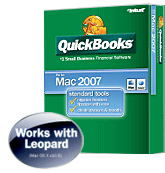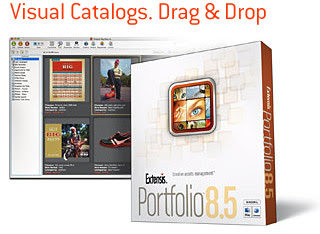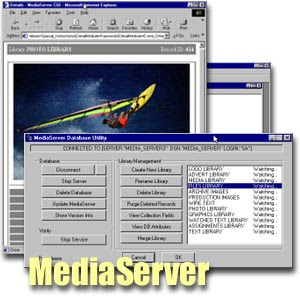The Solution
The Nativ team worked with Getty to develop system requirements and identify potential vendors. The recommendation that came forward was for Nativ to develop a customized solution called the Video Asset Pipeline Processor (VAPP). VAPP would draw on Nativ’s existing Mio Core System for cataloging, validating, filtering, and repurposing video content, and on Telestream’s FlipFactory for transcoding media and automating video workflows.According to Folland, “Mio works as a video analysis tool by telling both the end user and Getty everything they need to know about the file being uploaded, from file format to pixel aspect ratio to language.” The system also serves an important gateway function by validating whether the files being uploaded are in an acceptable format before kicking off the upload process.
As for the choice of vendor for the transcoding component, Claxton says, “Telestream is recognized as a market leader in transcoding, and we were already familiar with the FlipFactory product.” One of the features of FlipFactory that Getty and Nativ particularly liked was its ability to support a broad range of file formats. Says Claxton, “We needed something that spanned as broad a range of file types as possible” because MMS customers need to choose the format in which they store their video assets.
Starting in February 2007, Getty’s London development team worked closely with the Nativ consultants on developing VAPP and integrating Mio, while Nativ and Telestream collaborated on the FlipFactory implementation customized for Getty’s needs. George Boath, Telestream’s European regional manager, says that “the Software Developer Toolkit for FlipFactory provides a lot of power and flexibility to use predefined code, customized code, or a combination of the two.” He recalls that the Getty implementation used mostly predefined code but Nativ did some customization to address Getty’s requirements. “The Nativ team got up to speed on FlipFactory very quickly,” Boath recalls. “It helped that we have a support team in London who could work closely with them.”
Claxton and Boath both mention that the project required Getty to appreciate the difference in complexity between video and still image processing. “With most of our customers, 25-50% of the project issues that our technical guys are called in to resolve are on storage capacity and network infrastructure,” says Telestream’s Boath. “Oftentimes the IT staff doesn’t anticipate the load that video processing will put on their infrastructure.”
It took about three months for the FlipFactory component of the Getty solution to be completed, and about six months total for the VAPP solution comprising Nativ and Telestream platforms to be finalized, in time for an early August 2007 rollout. Claxton says that Getty will continue to use Nativ in a consulting capacity to tweak and improve the video management solution in future upgrades.
The Outcome
While it is still too early to gauge customer response to Getty Images’ new video management capabilities, the solution powered by Nativ and Telestream offers some marked advantages over the old system. Claxton points to the presence of thumbnail screens and automated metadata extraction as two key advantages that make it easier for end users to browse their corporate video assets.Another improvement is the availability of secure streaming previews of videos. “Our customers are concerned about their video image asset security; they want to provide a low-resolution streaming preview but prevent downloads of high resolution versions of the file,” says Claxton. Implementation of Akamai’s streaming preview technology as part of their solution addresses both the discovery and security concerns of Getty’s customers. “Using Akamai also took some of the burden off of our technical environment to support that video streaming.”
Nativ’s Folland points out that Getty’s MMS model provides key benefits for its customers, who may be addressing video asset management in earnest for the first time. “Media asset management solutions have historically been very expensive. But under Getty’s ‘software as service’ model, customers pay for only the video management they need. They don’t have to buy, install, or host software because MMS services are entirely web-based. And they offer a massive breadth of support for video formats, which have yet to be standardized.”
The ability of Getty Images to offer a robust video processing system to its MMS clients is a major competitive advantage. “Customers think of video as just another asset type, the next step in digital assets, but it’s about ten times as complicated to store and manage,” Claxton says, looking at Getty’s own experience. “Images are in standardized formats, but video can span a huge range of formats and codecs. By offering video support, we shield our customers from the complexity of doing it themselves.”
Read Case Study Part I



